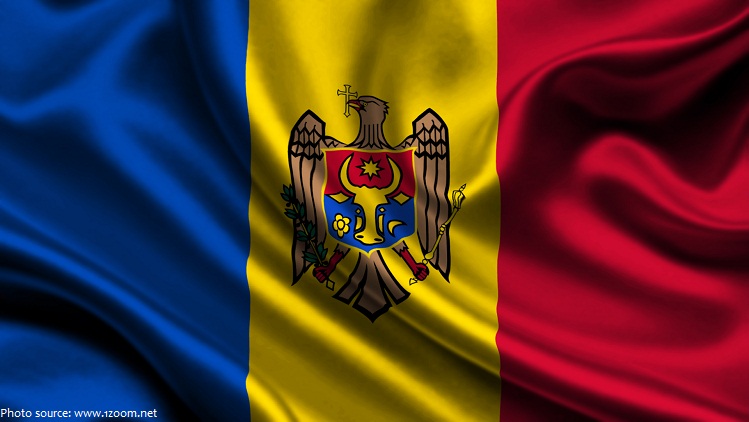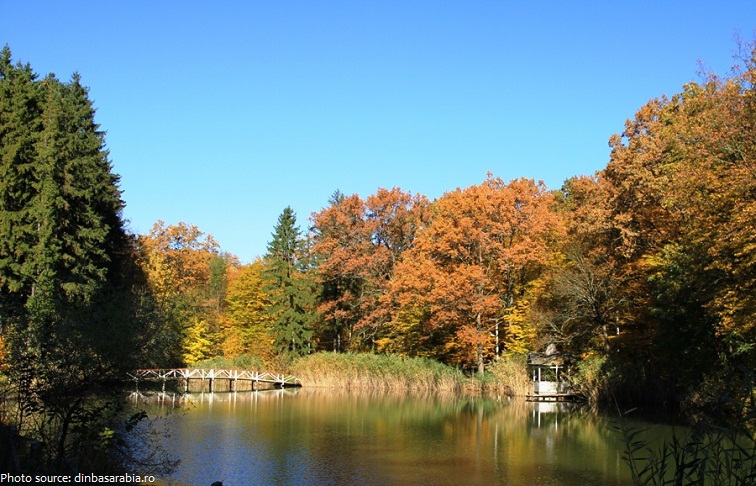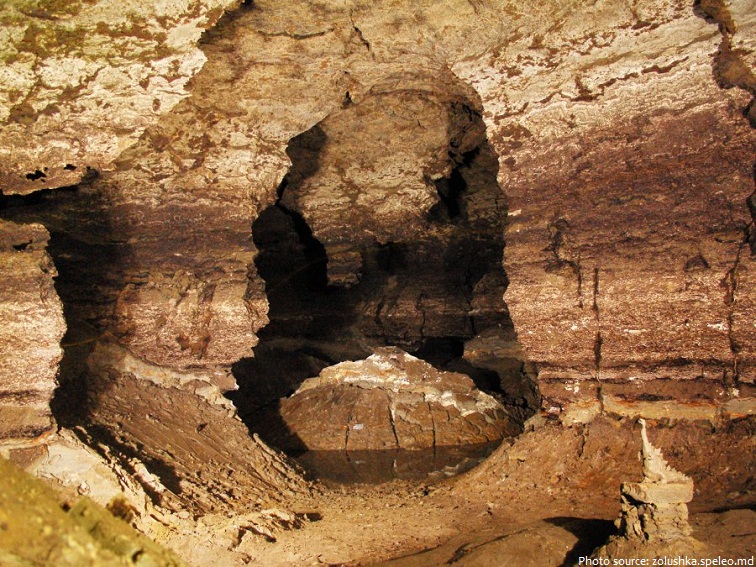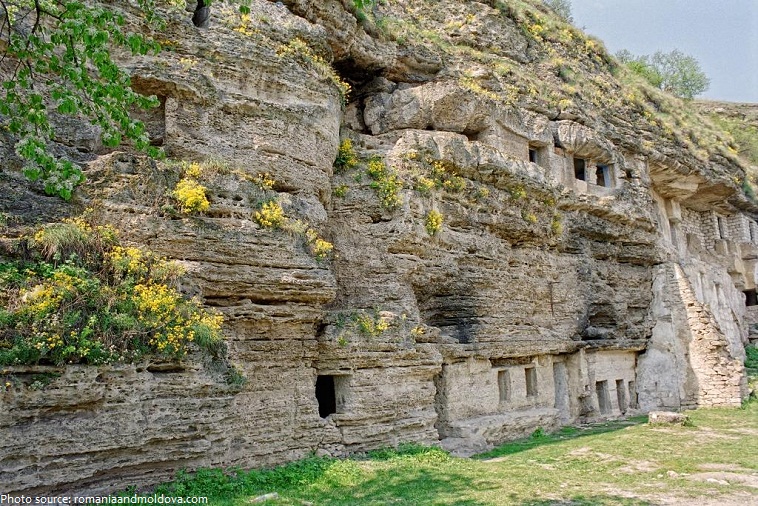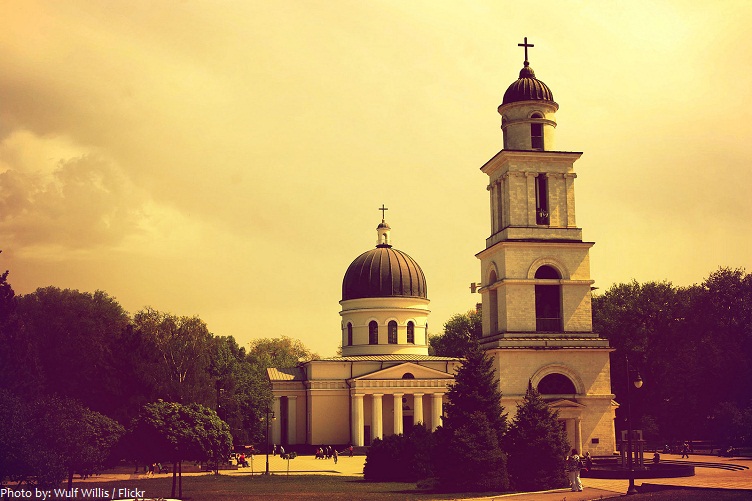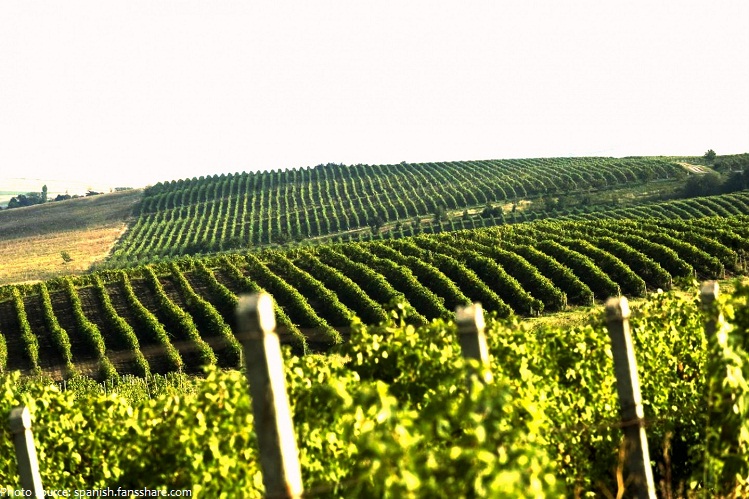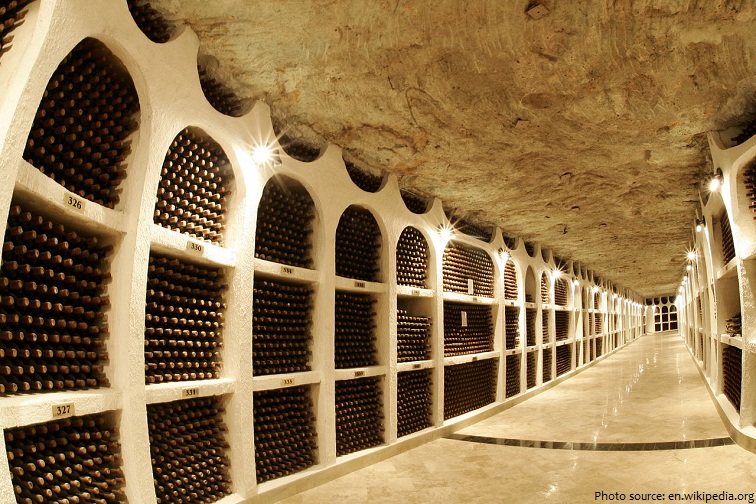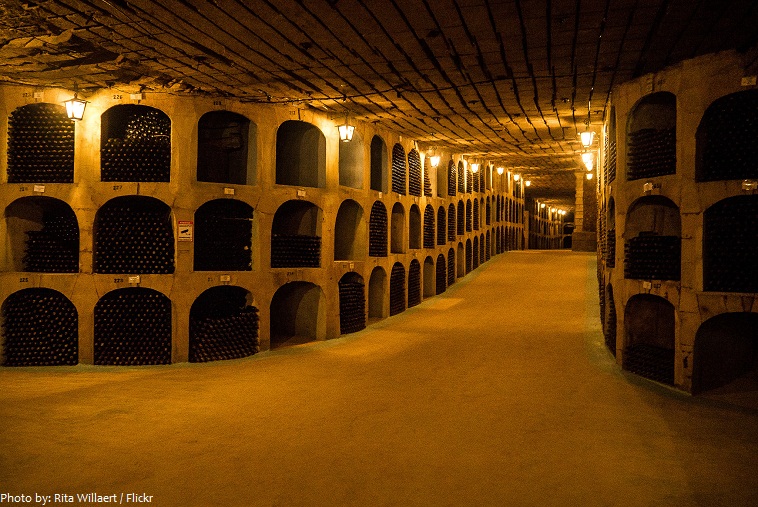Moldova is a landlocked country in Eastern Europe.
The official name of the country is the Republic of Moldova.
Moldova is bordered by Romania to the west and Ukraine to the north, east, and south.
The official language is Romanian.
As of 1 January 2016, the population of Republic of Moldova was estimated to be 4,067,485 people.
Chișinău also known formerly as Kishinev, is the capital and largest city of the Republic of Moldova. The city is Moldova’s main industrial and commercial center, and is located in the middle of the country, on the river Bîc.
While most of the country is hilly, elevations never exceed 430 meters (1,411 feet) – the highest point being the Bălănești Hill.
Most of the territory (74%) is covered by agricultural landscape (vineyards, orchards, pastures, grain fields), the forestland counts for 13,7% (broadleaf deciduous forest type, mainly of oaks, predominantly in the central hilly area), and wetlands form around 3% (flood plain areas in the lower Prut and Dniester rivers).
The current protected area system counts for 4.65% of the territory. Most of the landscape and biological diversity is conserved within the four nature reserves and other protected categories.
The Padurea Domneasca (Royal Forest) Natural Reservation is the largest in Moldova, covering an area of 6,032 hectares (14,905 acres) . It was founded in 1993. Moldova’s largest and oldest stand of old-growth oak trees can be found in the reserve; the oldest tree is recorded to be more than 450 years old. Also Many animals can also be found in the reservation, including a small herd of bison.
Emil Racovita Cave is the largest karst cave in Moldova, the 13th longest in Europe (3rd among the gypsum caves) and 26th in the world. It has a vast network of underground galleries stretching more than 89,000 meters (291,991 feet) and is split across several levels.
The medieval town of Orheiul Vechi was built approximately in 1330, during the reign of the Golden Horde. Today it is an open-air museum, formed of natural and man-made sites.
Tipova cave monastery is located onto the rocky shore of the Nistru river. This Orthodox cave monastery is the largest not only in Moldova, but also in all Eastern Europe. The monastery was founded in the VI century AD, but then was abandoned for a long time and restored only in 1756.
Căpriana Monastery is one of the oldest monasteries of the Republic of Moldova, dating back to the early 1420s. Soon after it was established the monastery was given ‘Royal’ status after visits by the ruling heirachy including Alexandru cel Bun otherwise known as Alexander The Good, Stefan del Mare or Stefan the Great and Alexandru Lăpuşneanu.
The Cathedral of Christ’s Nativity is the main cathedral of the Moldovan Orthodox Church in Central Chișinău, Moldova. The cathedral was built in the 1830s to a Neoclassical design by Abram Melnikov.
Moldova has 112,000 hectares (276,758 acres) of vineyard planted with over 30 types of technical varieties. There are 4 historical wine regions: Valul lui Traian (south west), Stefan Voda (south east), Codru (center), and Balti (North).The history of Wine of Moldova starts in 3000 BC, while the first vines were recorded here 7000 years BC.
Cricova Underground City – Having become an emblem of the Moldovan winemaking, the underground wine city Cricova has galleries stretching on 70 km, with streets named symbolically: Dionis, Feteasca, Cabernet-Sauvignon, etc. Situated 11 km away from the capital Chisinau, the limestone undergrounds located at 35-80 m depth house 30 million liters of wine at a constant temperature of 12-14 ˚C and 97-98% humidity.
Largest wine cellar by number of bottles – The cellars of the Milestii Mici wine-making plant in Moldova contain over 1.5 million bottles of wine. The bottles are stored in 55 km (34 miles) of underground galleries excavated in lime mining operations. The first bottle was stored in 1968, and new vintages are added each year. Milestii Mici is also the name of the town in which the cellar is situated. ~ The Guinness Book of World Records ~
In Moldova you’ll find the largest building in the world in the shape of a bottle (28 meters (92 feet)), that is Strong Drinks Museum in Tirnauca village.
Congaz is the largest village in Europe with population of 13,500 people.
Moldovan cuisine is similar to neighboring Romania, and has been influenced by elements of Russian, Turkish, and Ukranian cuisine. Main dishes include beef, pork, potatoes, cabbage and a variety of cereals.
